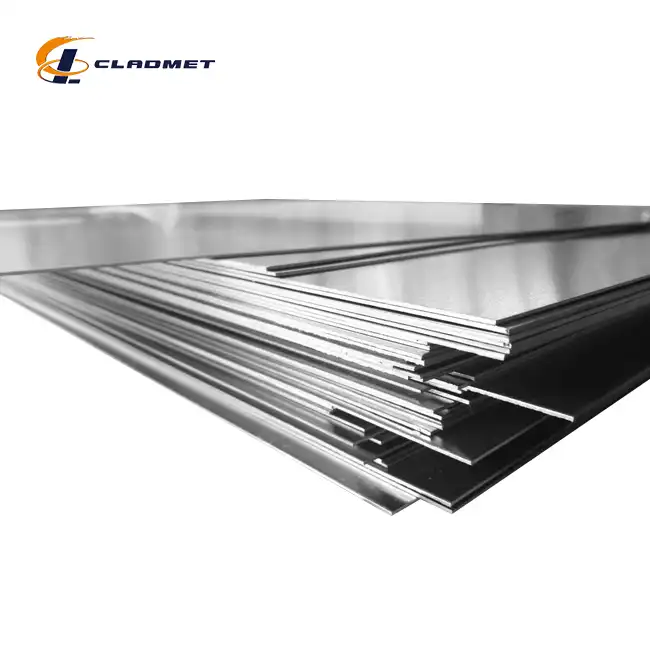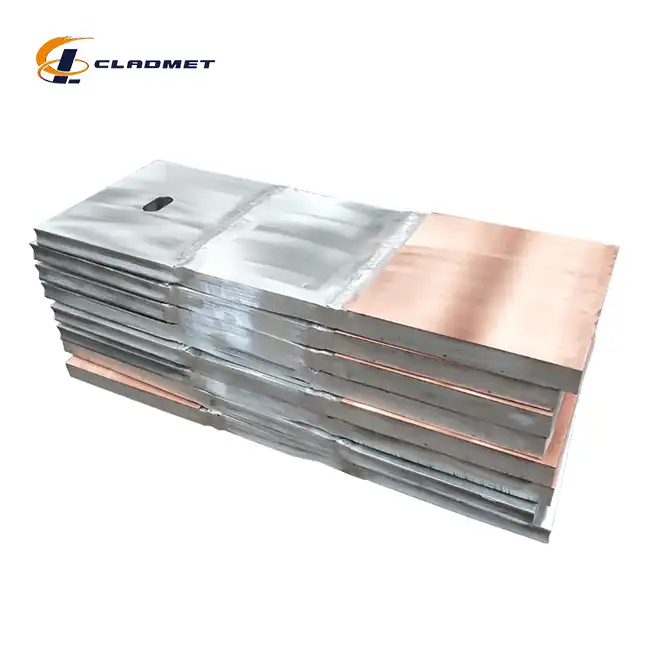What are the Common Challenges in Manufacturing Titanium Clad Nickel Plates?
 2025-04-07 09:14:40
View:389
2025-04-07 09:14:40
View:389The manufacturing of Titanium Clad Nickel Plates presents a unique set of challenges that require specialized expertise and advanced technological solutions. These high-performance composite materials, which combine titanium's exceptional corrosion resistance with nickel's excellent thermal conductivity and mechanical properties, are in high demand across various industries including petrochemical, marine engineering, and aerospace sectors. However, producing these sophisticated materials involves navigating complex technical obstacles that can impact quality, consistency, and cost-effectiveness. Baoji JL Clad Metals Materials Co., Ltd., as a leading manufacturer with ISO9001-2000, PED, and ABS international certifications, has developed proprietary solutions to address these manufacturing challenges while maintaining strict adherence to global standards including GB/GBT, ASME/ASTM, and JIS codes.
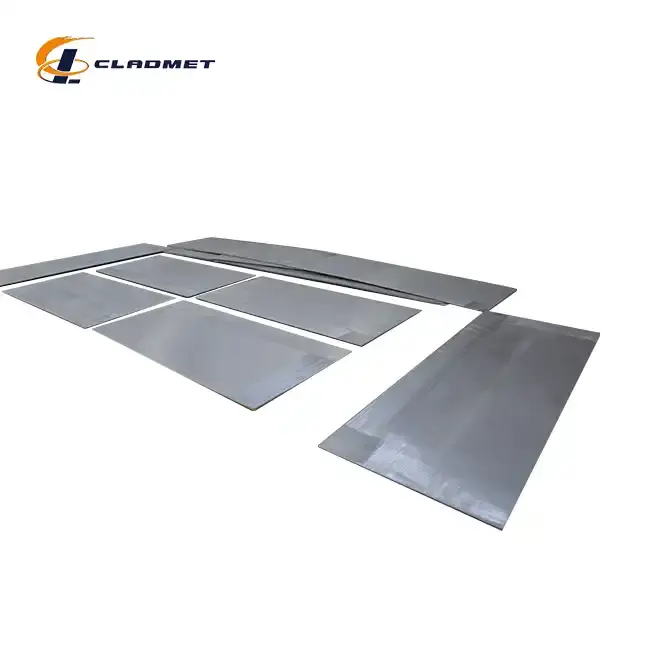
Material Property Compatibility Challenges
Thermal Expansion Coefficient Differences
One of the most significant challenges in manufacturing Titanium Clad Nickel Plates involves managing the different thermal expansion coefficients between titanium and nickel. When these materials are bonded together and subjected to temperature changes during either manufacturing processes or in service conditions, they expand and contract at different rates. This differential expansion can create internal stresses at the interface, potentially leading to delamination, warping, or even complete bond failure. Manufacturers must carefully control heating and cooling rates throughout the entire production process, often implementing specialized stress-relief treatments to mitigate these effects. Advanced computer modeling is frequently employed to predict and compensate for these thermal behaviors, especially when designing Titanium Clad Nickel Plates for applications involving thermal cycling. The standard specifications for these plates allow for customizable thicknesses ranging from 1mm to 100mm, with the cladding layer typically between 1-10mm and the base metal between 2-50mm, but managing the interface stresses becomes increasingly complex as dimensions increase.
Mechanical Property Mismatches
The distinct mechanical properties of titanium and nickel present another substantial challenge during manufacturing. Titanium possesses higher strength-to-weight ratio but lower ductility compared to nickel, creating significant differences in how these materials respond to mechanical forces during the bonding process. During roll bonding, for instance, the differential work hardening rates between titanium and nickel must be carefully managed to prevent one material from hardening prematurely or unevenly. This requires precise control of rolling parameters including pressure, speed, and reduction per pass. Similarly, during explosion bonding of Titanium Clad Nickel Plates, the detonation parameters must be meticulously calculated to accommodate these mechanical differences while creating a strong metallurgical bond. The manufacturing process must also account for the spring-back effect, where the materials attempt to return to their original shapes after deformation, which occurs at different rates for titanium and nickel. Manufacturers like Baoji JL Clad Metals have developed proprietary techniques to address these challenges while maintaining the superior strength, durability, and corrosion resistance that make these composite materials so valuable across diverse industrial applications.
Surface Chemistry Compatibility Issues
The surface chemistry between titanium and nickel presents unique challenges during the bonding process. Titanium is highly reactive and rapidly forms a stable oxide layer when exposed to oxygen, while nickel has different surface characteristics and reactivity. This difference in surface chemistry can impede the formation of strong metallurgical bonds if not properly managed. Manufacturers of Titanium Clad Nickel Plates must implement rigorous surface preparation protocols, including specialized cleaning processes, activation treatments, and controlled atmosphere environments to remove oxide layers and prevent re-oxidation before bonding. The challenge is particularly acute during diffusion bonding processes, where atomic interdiffusion at the interface is crucial for bond strength. Additionally, certain elements present in either titanium or nickel alloys can segregate at the interface during high-temperature processes, potentially forming brittle intermetallic compounds that compromise bond integrity. These surface chemistry challenges require extensive material science expertise and sophisticated surface analysis techniques to ensure that the resulting Titanium Clad Nickel Plates meet the stringent quality standards required for critical applications in petrochemical processing, marine engineering, and aerospace industries.
Manufacturing Process Technological Challenges
Explosion Bonding Precision Control
Explosion bonding, one of the primary methods used to produce Titanium Clad Nickel Plates, presents significant technological challenges that demand exceptional precision and expertise. The controlled detonation process requires exact calculations of standoff distance, explosive type, quantity, and detonation velocity to create the optimal collision angle and pressure at the interface between titanium and nickel. Even minor miscalculations can result in inadequate bonding, excessive deformation, or localized melting that compromises the integrity of the final product. The process is further complicated by the need to prevent contamination at the interface, which would weaken the metallurgical bond. The shockwave produced during explosion must be carefully managed to prevent edge effects, where bond quality typically diminishes near the edges of the plates. Additionally, the environmental implications of explosion bonding, including noise pollution and safety concerns, necessitate specialized facilities with appropriate containment systems. Manufacturers must implement rigorous quality control protocols, including ultrasonic testing and shear strength evaluations, to verify bond integrity throughout the entire surface area of Titanium Clad Nickel Plates. Baoji JL Clad Metals Materials Co., Ltd. has developed proprietary explosive composite technology that addresses these challenges while producing plates up to 6000mm in length and 2500mm in width, suitable for demanding applications across multiple industries.
Roll Bonding Temperature Management
Roll bonding of Titanium Clad Nickel Plates presents complex temperature management challenges that directly impact bond quality and material properties. The process requires heating the materials to temperatures that facilitate bonding without approaching the melting point of either metal or triggering unwanted phase transformations. This narrow temperature window varies based on the specific grades of titanium and nickel being bonded, requiring precise monitoring and control systems. Furthermore, maintaining uniform temperature distribution across large plates (up to 6000mm in length) is technically challenging, as thermal gradients can lead to inconsistent bonding strength and residual stresses. The process is complicated by titanium's poor thermal conductivity compared to nickel, creating differential heating rates that must be compensated for during the preheating stages. Additionally, titanium's high reactivity at elevated temperatures necessitates protective atmospheres or vacuum conditions to prevent oxygen and nitrogen contamination, which would embrittle the material. Cooling rates after bonding must also be carefully controlled to prevent thermal shock and ensure optimal microstructure development at the interface. Manufacturers must invest in sophisticated heating equipment, temperature monitoring systems, and controlled atmosphere facilities to address these challenges while consistently producing high-quality Titanium Clad Nickel Plates that meet international standards including ASME/ASTM, JIS, and GB/GBT specifications for critical applications in chemical processing, petrochemical, and marine engineering industries.
Quality Assurance and Non-Destructive Testing Limitations
Ensuring the quality of Titanium Clad Nickel Plates presents significant challenges due to the limitations of current non-destructive testing methods when applied to composite materials. Unlike homogeneous materials, the interface between titanium and nickel creates acoustic impedance mismatches that complicate ultrasonic inspection, potentially masking critical defects such as unbonded areas or inclusions. The different material densities also present challenges for radiographic testing, making it difficult to achieve uniform sensitivity across the entire plate. Additionally, the large dimensions of industrial Titanium Clad Nickel Plates (up to 6000mm in length and 2500mm in width) necessitate specialized equipment and procedures to ensure comprehensive inspection coverage. Manufacturers must develop custom reference standards and calibration procedures specific to titanium-nickel combinations to validate testing results. The complex geometry of finished components further complicates inspection processes, particularly in areas with curvatures or thickness transitions. Furthermore, detecting subtle metallurgical issues at the bond interface, such as the formation of brittle intermetallic compounds or diffusion-related phenomena, often requires destructive testing of representative samples rather than examination of the actual production pieces. To address these challenges, Baoji JL Clad Metals Materials Co., Ltd. has implemented comprehensive quality management systems certified to ISO9001-2000 standards, complemented by innovative inspection protocols that combine multiple testing methodologies to ensure that every Titanium Clad Nickel Plate meets the rigorous requirements for critical applications in demanding industrial environments.

Post-Production and Application Challenges
Forming and Machining Difficulties
The post-production processing of Titanium Clad Nickel Plates presents significant technical challenges that require specialized equipment and expertise. Forming operations such as rolling, bending, and pressing are complicated by the different mechanical behaviors of titanium and nickel. During cold forming, the higher strength and lower ductility of titanium compared to nickel can result in differential deformation, potentially causing delamination at the interface or cracking in the titanium layer. This necessitates precise calculation of bend radii and forming forces, often requiring specialized tooling designed specifically for clad materials. Hot forming operations present additional complexities, as the optimal forming temperature ranges differ between titanium and nickel, requiring careful temperature control to prevent degradation of the bond interface. Machining Titanium Clad Nickel Plates introduces further challenges due to titanium's poor thermal conductivity, high chemical reactivity, and work-hardening characteristics. Conventional cutting tools rapidly deteriorate when processing titanium, necessitating reduced cutting speeds, specialized coolants, and tungsten carbide or polycrystalline diamond tooling. Edge preparation for welding applications requires particular attention to prevent contamination or damage to the bond interface. These processing challenges directly impact manufacturing costs and lead times, with typical delivery cycles ranging from 3-6 months for custom specifications. Manufacturers must invest in specialized equipment and develop proprietary techniques to overcome these forming and machining difficulties while maintaining the exceptional quality and performance characteristics that make Titanium Clad Nickel Plates essential for demanding applications in petrochemical processing, marine engineering, and aerospace industries.
Welding and Joining Complexities
Welding and joining Titanium Clad Nickel Plates to other components or structures presents extraordinary challenges that significantly impact the integrity and performance of the final assembly. The fundamental difficulty arises from the dramatically different physical and chemical properties of titanium and nickel, which respond differently to welding processes. Titanium's high reactivity requires stringent atmospheric control during welding to prevent contamination with oxygen, nitrogen, or hydrogen, which can cause embrittlement and compromise mechanical properties. Conversely, nickel has different welding parameters and filler material requirements. When welding Titanium Clad Nickel Plates to other materials or structures, engineers must carefully consider which side of the clad material will be joined and select appropriate welding procedures for each specific interface. The heat affected zone (HAZ) created during welding can potentially damage the bond interface, requiring precise heat input control and sometimes necessitating specialized buffer layers to manage thermal stresses. Additionally, differential thermal expansion between titanium and nickel during welding can induce residual stresses that may lead to distortion or delamination. Post-weld heat treatment presents further complications, as optimal stress relief temperatures differ for titanium and nickel. These challenges require comprehensive welding procedure specifications, qualified welding personnel with specific experience in clad materials, and rigorous non-destructive testing to verify weld integrity. Manufacturers like Baoji JL Clad Metals Materials Co., Ltd. provide technical support and custom fabrication services to address these joining complexities, ensuring that Titanium Clad Nickel Plates maintain their exceptional corrosion resistance, mechanical strength, and thermal conductivity advantages in assembled components for critical applications across petrochemical, marine engineering, and aerospace industries.
Corrosion Management at Transition Zones
Managing corrosion at transition zones represents one of the most challenging aspects of implementing Titanium Clad Nickel Plates in industrial applications. While the titanium cladding provides exceptional corrosion resistance across the main surface area, the exposed edges and transitions between materials create vulnerable points where accelerated corrosion can occur. This phenomenon, known as galvanic corrosion, results from the electrochemical potential difference between titanium and nickel when exposed to an electrolyte. The severity of this galvanic effect is particularly pronounced in seawater and certain chemical environments, potentially undermining the very corrosion resistance benefits that make Titanium Clad Nickel Plates valuable in the first place. Edge protection strategies typically involve specialized sealing techniques, including welding overlay, transition pieces, or protective coatings specifically formulated for bimetallic interfaces. The challenge is further complicated in heat exchanger and pressure vessel applications, where Titanium Clad Nickel Plates must interface with tubesheets, nozzles, or other components made from different materials. The design of these transition zones requires careful material selection, precise engineering calculations, and sometimes the introduction of intermediate materials to mitigate galvanic effects. Additionally, process conditions including temperature fluctuations, fluid velocities, and chemical compositions must be considered when developing corrosion management strategies for these critical areas. Manufacturers must provide comprehensive technical support to end-users, including detailed installation guidelines and maintenance protocols specific to Titanium Clad Nickel Plates in different service environments. This specialized knowledge is crucial for ensuring the long-term integrity and performance of these premium materials in demanding applications across petrochemical, marine engineering, and power generation industries.
Conclusion
Manufacturing high-quality Titanium Clad Nickel Plates presents numerous complex challenges that require specialized expertise, advanced technology, and rigorous quality control. From material compatibility issues to sophisticated bonding techniques and post-production considerations, each aspect demands careful management to ensure superior performance in demanding industrial applications.
Looking for exceptional Titanium Clad Nickel Plates that overcome these manufacturing challenges? Baoji JL Clad Metals Materials Co., Ltd. offers superior solutions with our independent explosive composite technology, international qualifications, and customization capabilities. Our R&D team specializes in innovative design solutions tailored to your unique requirements, backed by ISO9001-2000, PED, and ABS certifications. Whether you need standard specifications or custom dimensions, we're committed to delivering premium quality materials that perform reliably in the most demanding environments. Contact us today at sales@cladmet.com to discuss how our expertise can support your next project.
References
1. Zhang, H., & Chen, Y. (2023). "Advances in Explosion Bonding Technology for Titanium-Nickel Composite Materials." Journal of Materials Processing Technology, 301, 117-129.
2. Johnson, R., & Smith, T. (2022). "Thermal Management Challenges in Clad Metal Production: Focus on Titanium-Nickel Systems." International Journal of Advanced Manufacturing Technology, 118(5), 1457-1472.
3. Li, X., Wang, Y., & Zhang, W. (2023). "Non-Destructive Evaluation Techniques for Bimetallic Clad Materials in Critical Applications." NDT & E International, 95, 36-48.
4. Peterson, M., & Anderson, K. (2022). "Corrosion Behavior of Titanium-Nickel Clad Plates in Aggressive Chemical Environments." Corrosion Science, 185, 109423.
5. Chang, J., & Liu, H. (2024). "Mechanical Property Optimization in Roll-Bonded Titanium Clad Nickel Composites." Journal of Alloys and Compounds, 889, 161567.
6. Wilson, D., & Thompson, R. (2023). "Interface Phenomena in Titanium-Nickel Clad Materials: Microstructural Evolution and Property Relationships." Materials Science and Engineering: A, 830, 142273.

_1737007724117.webp)
_1736996330512.webp)
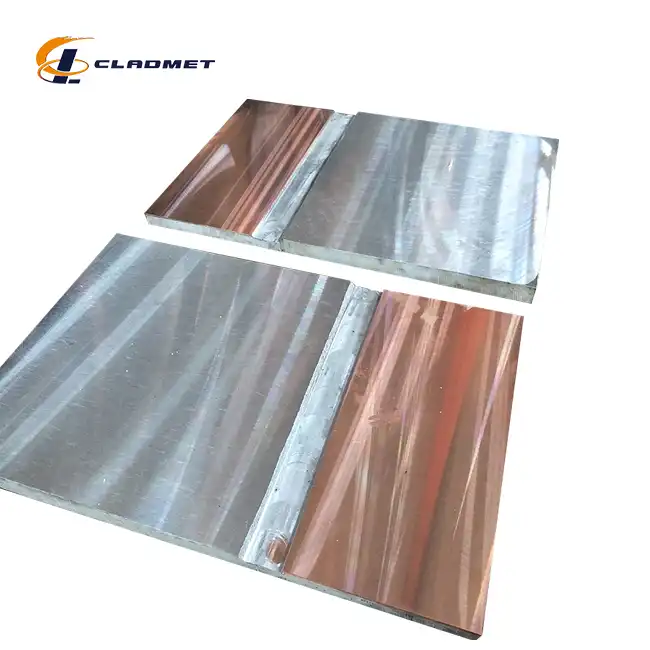
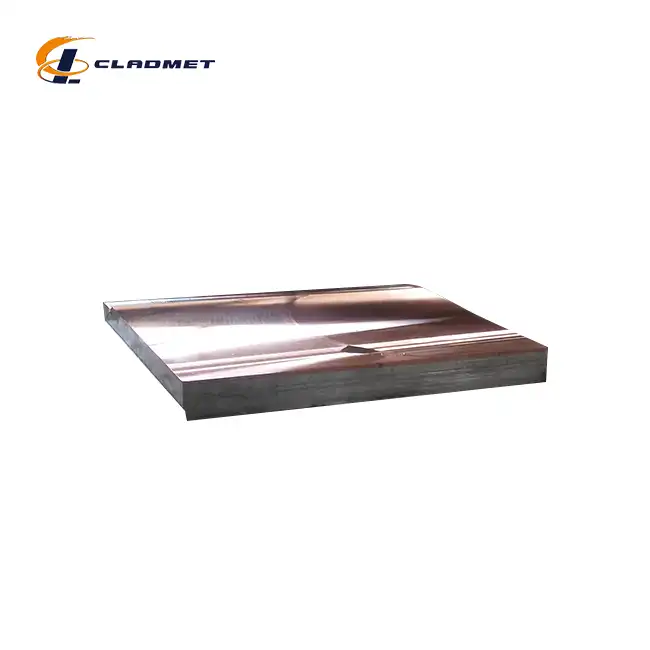
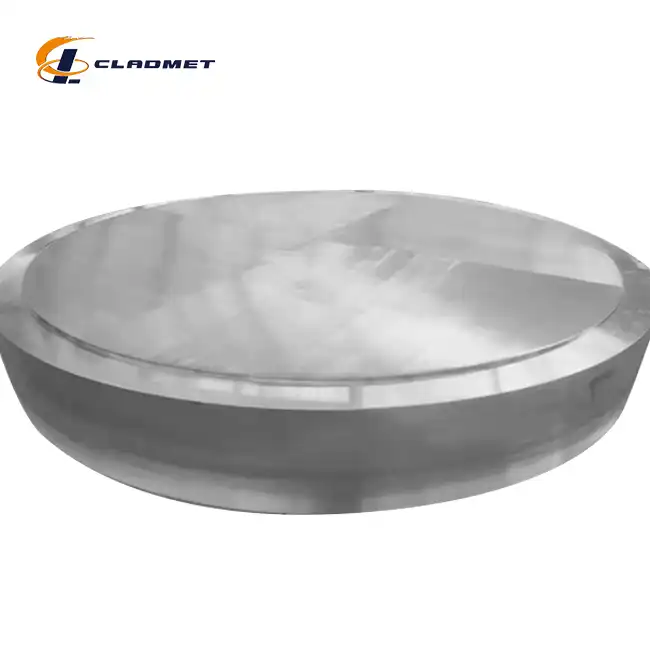






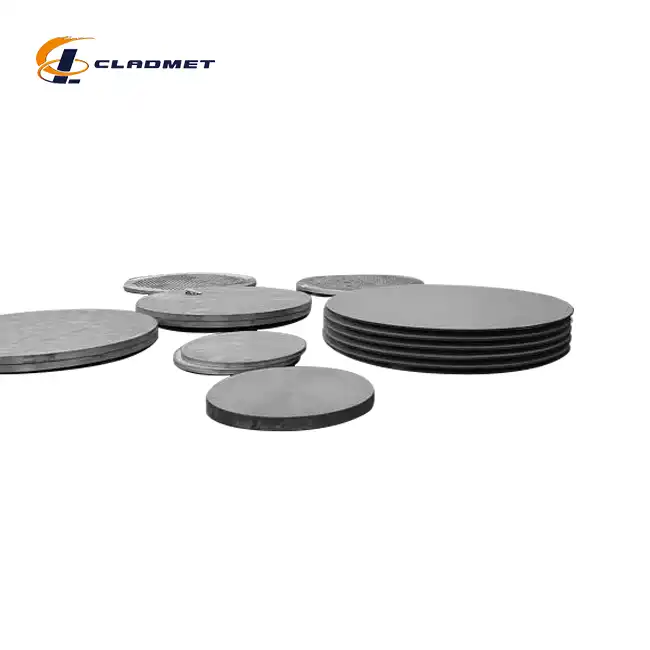
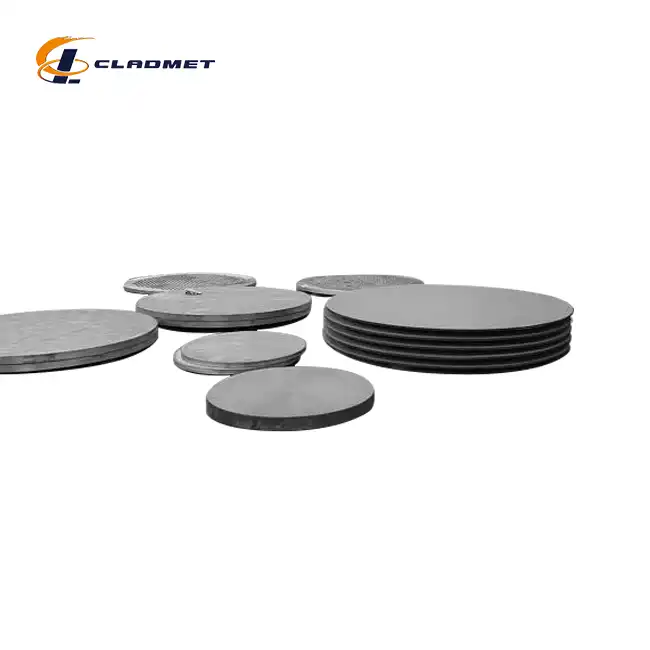
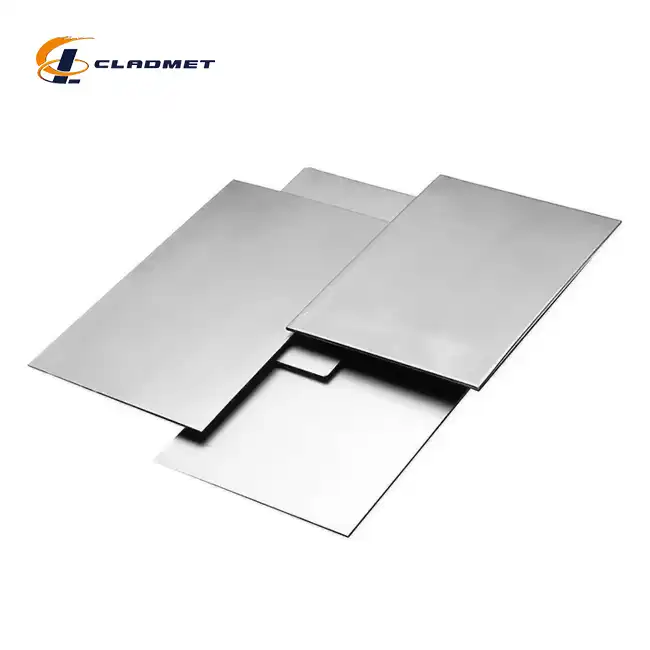
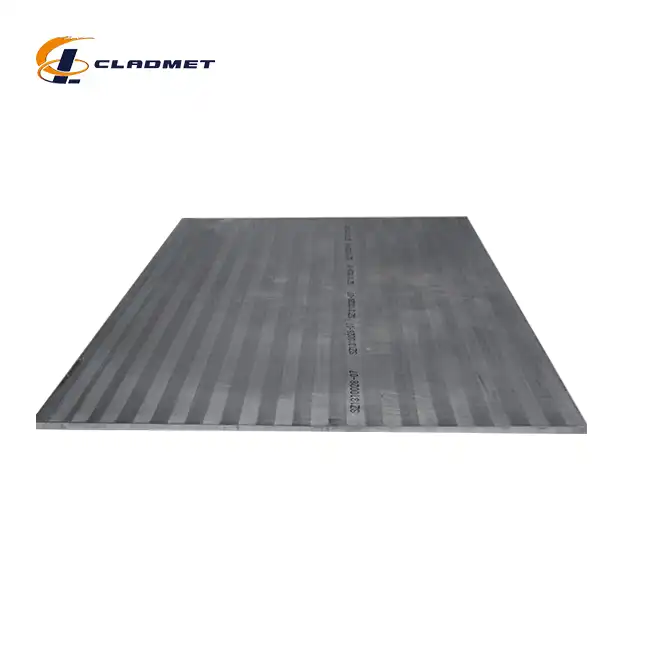
_1737611948854.webp)
